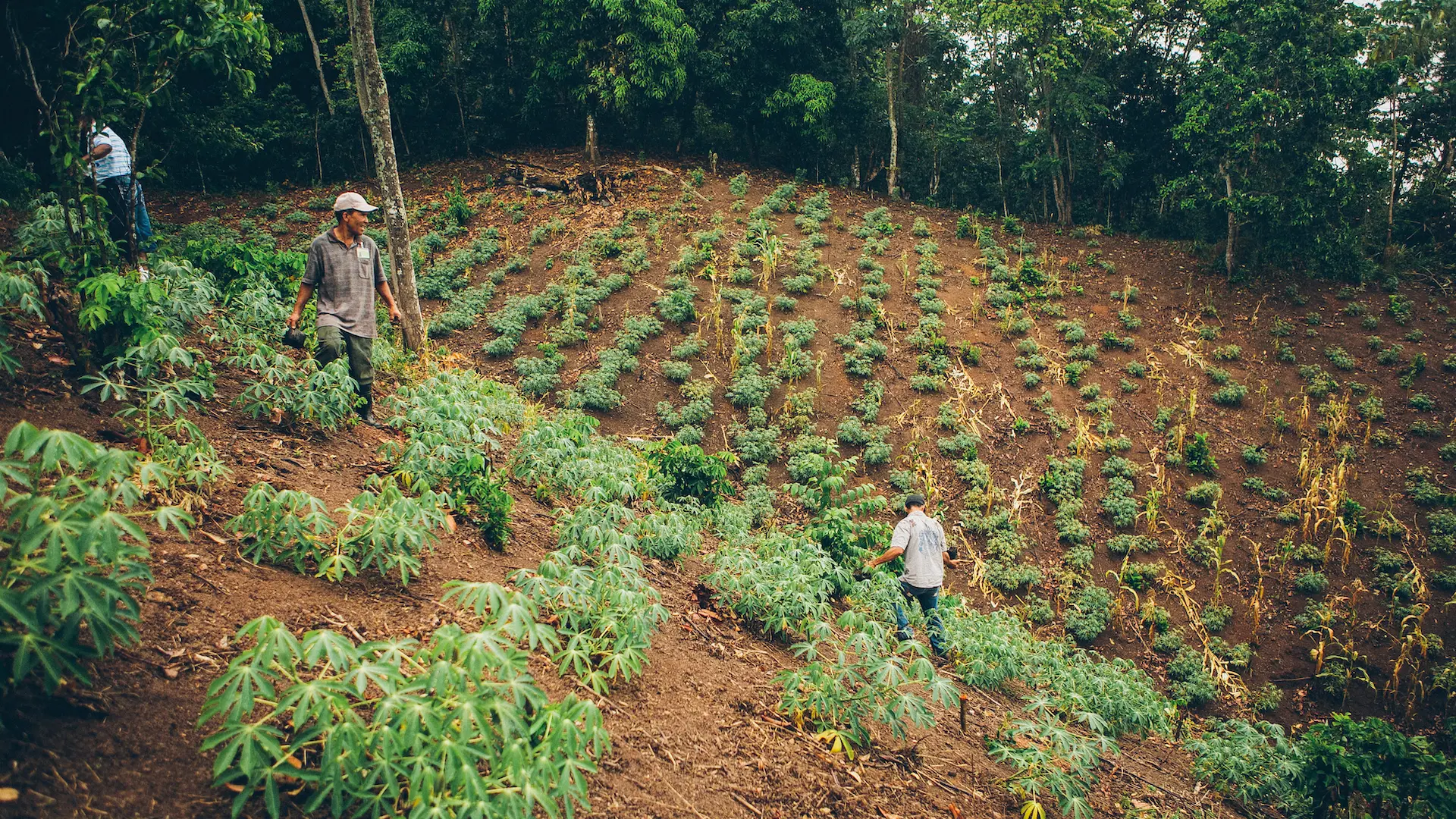Healing the land
April 1, 2019

I was looking at desiccated, erosion-scarred hillsides, each one a patchwork of rock walls delineating fields of withered corn and representing the entire future of a family, when the phrase “weary land” first came to mind. At the time I was in Haiti, but I have since seen weary land all over the world and my mind often goes to that hopeful passage in Isaiah 32:2, which hints at redemption and restoration that is not just spiritual but will be “like streams of water in the desert, and the shadow of a great rock in a weary land”.
My involvement in these parched landscapes began in part from a desire to make a difference in the lives of the extremely poor people who were migrating from Haiti across to shantytowns in the neighbouring Dominican Republic. As we talked with them we realised that most were actually recent arrivals from the countryside where they’d been farmers. Those shantytowns represented hope to these people—they actually looked like a better life compared to where they’d been!

And so we followed the problem upstream—literally and figuratively—to the mountains where the people had come from and realised that they’d been trying to make a living on land that was completely devastated; on land that looked like desert. That was in part because of deforestation, which dramatically increases soil erosion, and because of the lack of water resources—they were completely dependent on the rain and completely dependent on whatever rivers, streams and springs were there. Deforestation had taken that away as well.
Honestly, at first I came at this from a utilitarian perspective. I wasn’t particularly interested in the environment; I was interested in helping the poor. But what I learned was that poor farmers were completely dependent on the environment. And so for me, really the beginning of my involvement in environmental work was an outgrowth of my Christian commitment. How do we love our neighbour? By helping them take care of the land they depend on. But through that process—and very slowly through the course of about 25 years—I have learned that God values His creation for its own sake. The natural world is an expression of His tremendous creativity and love of diversity.

One of the first tasks ever given to humans was to give names to the animals (Genesis 2:19) and we haven’t even scratched the surface of that task yet—biologists are yet to classify more than three-quarters of the earth’s species! Our other responsibility is outlined in Genesis 2:15, where God places Adam in the garden “to work it and take care of it”. So participating with God in creation is one of the very first tasks. We see this theme throughout Scripture—all the way to the New Testament where Christ is reconciling all things—all things—to Himself (Colossians 1:20) and His followers too are invited to participate in this work of reconciliation (2 Corinthians 5:18). We are still involved in participating with God in His plan of redemption of “all things”; not just human beings, but all of creation.
So we moved upstream into these rural communities, seeing that people were trying to farm land that was virtually untenable. We came to realise that God has given us tools in creation that we could use to begin to restore that land. And at the same time we could help people restore their livelihoods.

So we started teaching agri-forestry; mixing trees with traditional farming and sustainable agriculture—conservation agriculture—a lot of different techniques that began to conserve the soil, rebuild the soil, restore moisture to the soil, and restore life and flourishing to the watersheds.
It was both a problem of poverty and a problem of environmental degradation. So to address some of the economic issues we began to work with savings groups in which groups of 25–30 farmers would pool their savings. We’d take them through a fairly intensive training program and then organise loans that they would use to invest in their farms.
Our organisation, Plant with Purpose, is now working in hundreds of villages in seven different countries; partnering with about 200,000 farmers, watching them move out of poverty at the same time that the watersheds they’re living in are being restored.
Often subsistence farmers have been blamed for a lot of the deforestation problem through slash-and-burn farming, through cutting firewood and selling charcoal. But the farmers we’re working with have gone from being the villains in the story to the heroes. We’ve partnered with them as they’ve planted 26 million trees and restored entire watersheds. We’ve seen rivers and streams start to come back and we’ve begun thinking beyond conservation to restoration.
For me, one of the most exciting things is visiting communities where we’ve been working for five or 10 years and seeing life returning—seeing the green return; seeing rivers return. The local people see that as an expression of and a reflection of their faith; people actually understand that they have purpose—they have a calling. And many times, for farmers, that calling is caring for God’s creation.

As I recently drove through the mountains near Cornillon, Haiti, we passed hills covered with trees, and valleys that were little versions of paradise. I spoke with farmers like Wally Emilcar, who took me on a tour of one of his fields where he was growing bananas, chives, capsicums, tomatoes, sweet potato, sugarcane, grapefruit, soursop, squash, coffee and numerous other plants. He told me he had planted 15 different species of tree, including mahogany, cedar, acacia and pine. He explained how he has learned how to collect, save and germinate his own native pine seed and produces his own seedlings. I asked him what he used to grow on this same land and he laughed dismissively. “Nothing serious . . . some pigeon peas and corn, but the corn was really a waste of time.”
Farmers like Wally have learned, and are continually teaching me, that human beings are not necessarily the problem, but rather can exercise their God-given role as stewards of creation. Former guerrilla fighters in the Democratic Republic of Congo have described discovering purpose and self-respect by restoring the watersheds where they farm. In Tanzania last year, 10,000 farmers gathered for a day of celebration to recognise the fact that over the year they had voluntarily planted 1.4 million trees on their own farms and on the banks of nearby streams. Many of them have come to see their stewardship as an outward expression of their faith and a witness to surrounding communities.
There is still a long way to go, and Isaiah’s prophecy of total restoration is not likely to find complete fulfilment this side of Christ’s return. Yet so much more is possible than we often imagine, and it continues to be an incredible blessing to see tiny glimpses of God’s kingdom in unlikely places.
Scott Sabin is CEO of Plant With Purpose, a US-based NGO that focuses on land rehabilitation in developing countries. Find out more at PlantwithPurpose.org. This article is adapted from an article and video that first appeared on the Qideas.org website.







